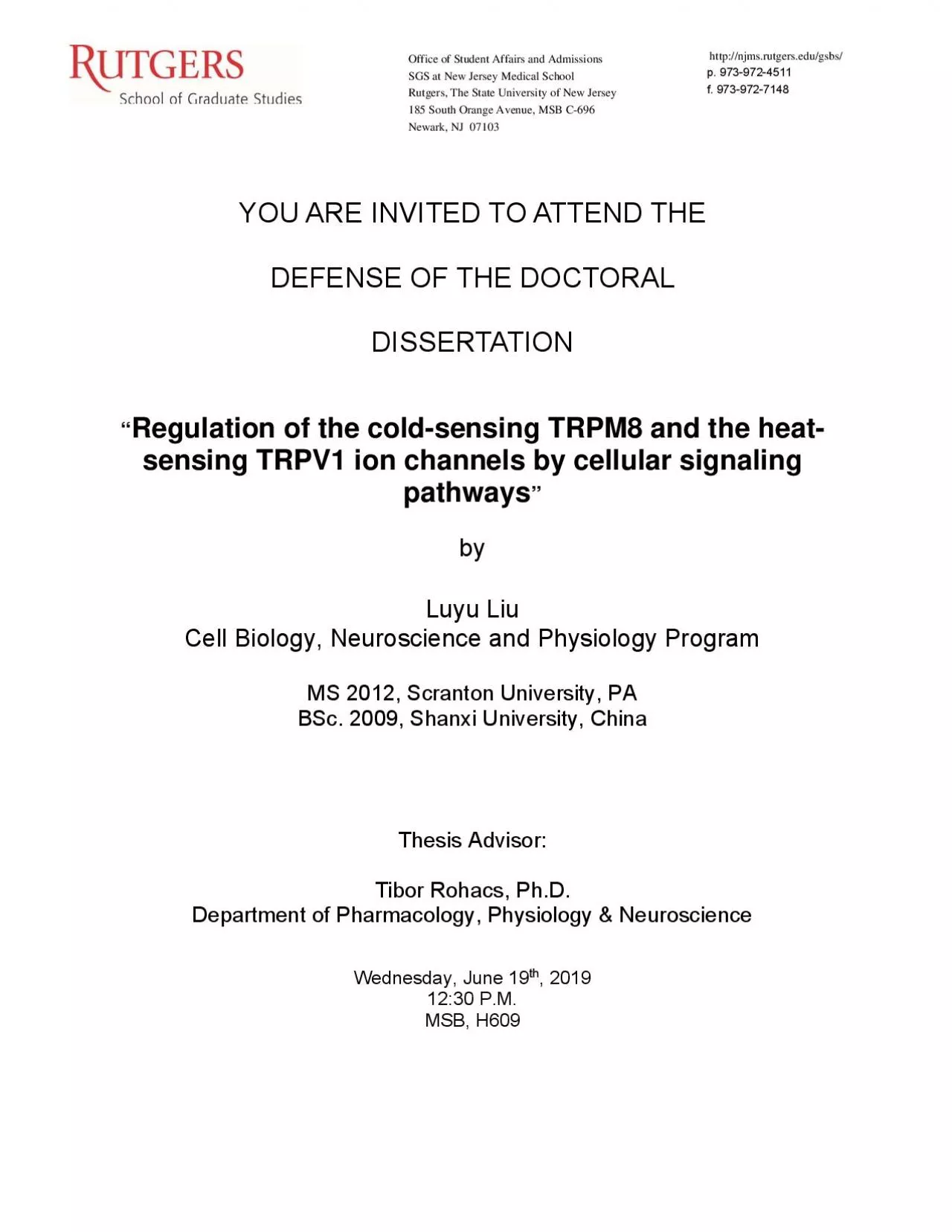PDF-Office of Student Affairs and Admissions SGS at New Jersey Medical Sch
Author : caroline | Published Date : 2021-08-10
Newar NJ 07103 httpnjmsrutgersedugsbs p 9739724511 f 9739727148 YOU ARE INVITED TO ATTEND THE DEFENSE OF THE DOCTORAL DISSERTATION MS 2012 Scranton University PA
Presentation Embed Code
Download Presentation
Download Presentation The PPT/PDF document "Office of Student Affairs and Admissions..." is the property of its rightful owner. Permission is granted to download and print the materials on this website for personal, non-commercial use only, and to display it on your personal computer provided you do not modify the materials and that you retain all copyright notices contained in the materials. By downloading content from our website, you accept the terms of this agreement.
Office of Student Affairs and Admissions SGS at New Jersey Medical Sch: Transcript
Download Rules Of Document
"Office of Student Affairs and Admissions SGS at New Jersey Medical Sch"The content belongs to its owner. You may download and print it for personal use, without modification, and keep all copyright notices. By downloading, you agree to these terms.
Related Documents














